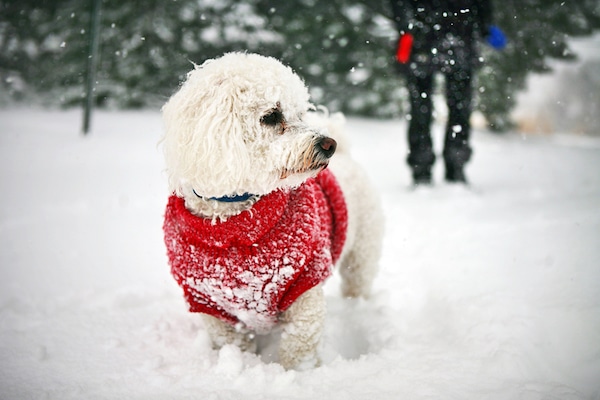The post How to Winter-Proof Your Dog for the Great Outdoors by Dr. Marty Becker appeared first on Dogster. Copying over entire articles infringes on copyright laws. You may not be aware of it, but all of these articles were assigned, contracted and paid for, so they aren't considered public domain. However, we appreciate that you like the article and would love it if you continued sharing just the first paragraph of an article, then linking out to the rest of the piece on Dogster.com.
The love of a good dog can warm the coldest human heart. Isn’t it only fair we return the favor when it comes to the dark days of winter? You might have better things to do than snuggle with your dog all winter long.
(Well, maybe not better, but more pressing things like gainful employment and doing a little laundry.) That’s just fine, because most dogs would go a little nuts if all they did for the whole winter season was snooze in front of the fire. They still need to go for walks, check the local pee-mail, and freshen up their territorial scents. And do you have any idea how wonderful freshly fallen snow smells to a dog?
The good news is that if your vet says your dog is healthy, he doesn’t have to go without a little cross-country sniffing. But just as we can’t head into the great frozen outdoors without a few precautions, neither can our dogs.
Dogs need to acclimate to winter weather. Approach the first cold days with caution and consider coats or sweaters for short-coated dogs.

Dog in sweater by Shutterstock.
Ice is dangerous for our dogs and for us. Although their nails give some protection from slippery surfaces, they can still skid and fall on icy ground, or pull us off our feet more easily. Consider non-skid footwear for yourself, just to be safe.
Be vigilant in removing ice from your dog’s coat, especially the fur on his feet, as well as in his pads and between his toes. These balls of ice can become extremely painful.
If you walk your dog in areas where de-icing chemicals are used, wash his feet and legs after every trip outdoors. These chemicals can cause burns on their skin, or internally if ingested. Don’t think you can take a quick spin around the block, pop the dog indoors, and head for work the way you can in warmer months.
If your dog spends time outdoors, such as when you’re at work, he must have shelter from the wind. A raised doghouse filled with straw can keep your pet toasty in most average winter weather. However, during times of strong winds, heavy snowfall, or very low temperatures, there’s no two ways about it: Your dog needs to come inside where it’s warm.
Cold weather can also be dehydrating, so keep a non-frozen source of water available at all times.
One last cold-weather tip for dog lovers: A dog’s body temperature runs higher than ours, so snuggle up with your canine best friend and watch the snow falling through the window. It’s the best cure for the winter blues out there!
Read Next: Do Dogs Need Coats in the Winter? 7 Myths and Facts
The post How to Winter-Proof Your Dog for the Great Outdoors by Dr. Marty Becker appeared first on Dogster. Copying over entire articles infringes on copyright laws. You may not be aware of it, but all of these articles were assigned, contracted and paid for, so they aren't considered public domain. However, we appreciate that you like the article and would love it if you continued sharing just the first paragraph of an article, then linking out to the rest of the piece on Dogster.com.
Dr. Marty Becker